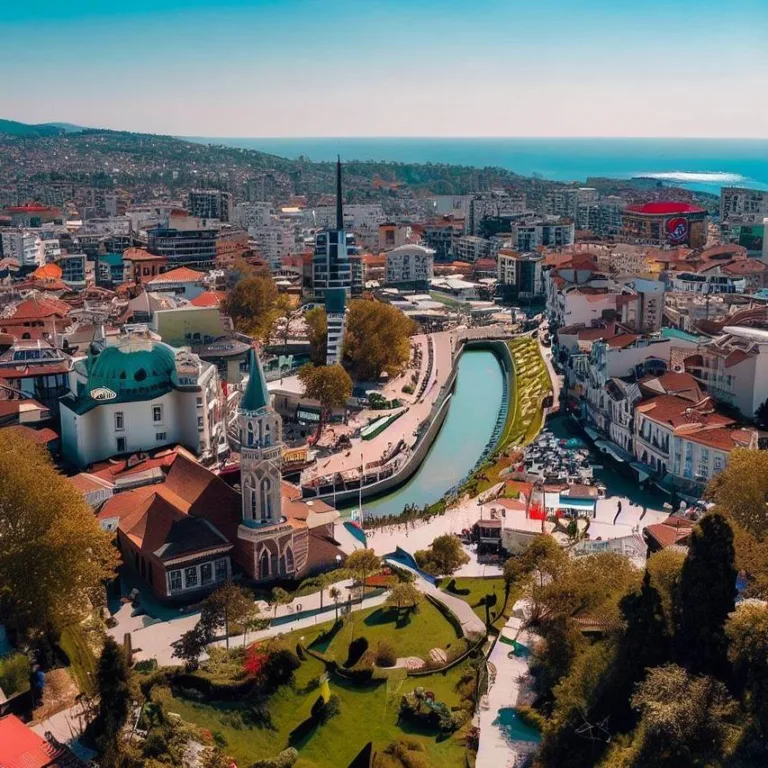Welcome to our in-depth exploration of Tuzla, a city that often goes unnoticed but holds an array of captivating experiences and historical significance. Nestled in the heart of Bosnia and Herzegovina, Tuzla boasts a rich tapestry of culture, history, and natural beauty that is waiting to be discovered by travelers and history enthusiasts alike.
A glimpse into tuzla’s history
Steeped in history, Tuzla’s origins can be traced back to ancient times. From its humble beginnings as a Roman settlement, the city has evolved into a cultural melting pot influenced by various civilizations including the Ottoman Empire and Austro-Hungarian rule. This diverse heritage is reflected in the city’s architecture, traditions, and culinary delights.
Unveiling tuzla’s cultural treasures
Tuzla’s cultural scene is a treasure trove waiting to be explored. The city is home to numerous museums, art galleries, and performance spaces that showcase both traditional and contemporary Bosnian art. The Salt Square, a historic hub, comes to life with street performers, artisans, and local vendors, offering a sensory experience like no other.
Tranquil natural beauty
Beyond its urban charm, Tuzla is nestled in a region of natural beauty. The stunning Panonian lakes surrounding the city are a haven for nature enthusiasts. Birdwatching, kayaking, and leisurely strolls along the shores provide a peaceful escape from the bustle of everyday life. The Gradina Park, a lush oasis, offers panoramic views of the city and is perfect for picnics and relaxation.
Culinary delights and gastronomic adventures
No visit to Tuzla is complete without indulging in its culinary offerings. The city’s diverse history is reflected in its cuisine, with influences from Turkish, Austrian, and Balkan flavors. Local dishes such as „ćevapi,“ a type of grilled minced meat, and „sogan-dolma,“ stuffed onions, tantalize taste buds and provide a unique gastronomic journey.
Modern urban charms
While honoring its rich past, Tuzla is also a modern urban center. Bustling markets, contemporary cafes, and vibrant street art add a dynamic touch to the city’s landscape. The blend of old and new creates a sense of vibrancy that resonates through the bustling streets and welcoming faces of the locals.
Frequently Asked Questions (FAQs)
Q: How do I get to Tuzla?
A: Tuzla has its own international airport, making it easily accessible by air. Additionally, well-connected road and rail networks provide convenient transportation options.
Q: What is the best time to visit Tuzla?
A: Tuzla’s climate is most pleasant during the spring and autumn months (April to June and September to October). These periods offer comfortable temperatures for exploring the city and its surroundings.
Q: Are English and other languages spoken in Tuzla?
A: Yes, English is widely spoken, especially in tourist areas. Additionally, you may find locals who speak German and Turkish due to historical influences.
Q: Are there accommodations to suit different budgets?
A: Absolutely. Tuzla offers a range of accommodations, from budget-friendly hostels to luxury hotels, ensuring that visitors with various budgets can find a suitable place to stay.
Q: What is the currency used in Tuzla?
A: The official currency of Bosnia and Herzegovina is the Bosnian Convertible Mark (BAM). It’s advisable to have some local currency on hand, but credit cards are widely accepted in major establishments.
Embark on an unforgettable journey to Tuzla, where history, culture, and nature intertwine to create an experience unlike any other. Discover the hidden gem that has been quietly waiting to share its beauty and stories with the world.
Viz také:






